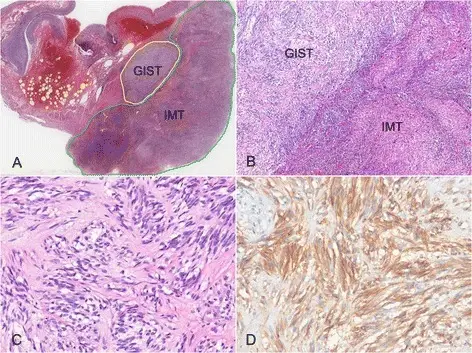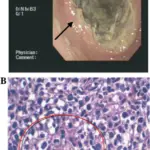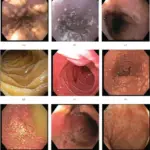Gastrointestinal Stromal Tumor also known as GIST, is type of tumor that occurs in the gastrointestinal tract, most commonly in the stomach or small intestine. This type of tumor is thought to grow from specialized cells found in the gastrointestinal tract.
What is the Pathology of Gastrointestinal Stromal Tumor?
The pathology of gastrointestinal stromal tumor is:
-Etiology: The cause of gastrointestinal stromal tumor is unknown, though they seem to be related to a mutation in the expression of the KIT protein.
-Genes involved: KIT gene, PDGFRA gene.
-Pathogenesis: The sequence of events that lead to gastrointestinal stromal tumor are: When there are mutations in the PDGFRA and KIT genes, these can cause the proteins to no longer require ligand binding to the stimulated and activated. In turn, the proteins and the signaling pathway is turned on consistently, leading to uncontrolled cell growth, and eventually, GIST development.
-Histology: The histology associated with gastrointestinal stromal tumor shows spindled, epithelioid, or mixed spindled and epithelioid type. The most common is spindle cell type. Nuclear pleomorphism can be seen especially in epithelioid cell type.
How does Gastrointestinal Stromal Tumor Present?
Patients with gastrointestinal stromal tumor typically men present at 50 years or older age. The symptoms, features, and clinical findings associated with gastrointestinal stromal tumor include: blood in stool, abdominal pain, pain while swallowing, tiredness, feeling full after eating little.
How is Gastrointestinal Stromal Tumor Diagnosed?
Gastrointestinal stromal tumor is diagnosed by CT scan, x-rays, endoscopies, colonoscopies, and biopsy. Routine blood tests and stool tests may be useful.
How is Gastrointestinal Stromal Tumor Treated?
Gastrointestinal stromal tumor is treated by surgical removal and Tyrosine kinase inhibitors.
What is the Prognosis of Gastrointestinal Stromal Tumor?
The prognosis of gastrointestinal stromal tumor is good.



